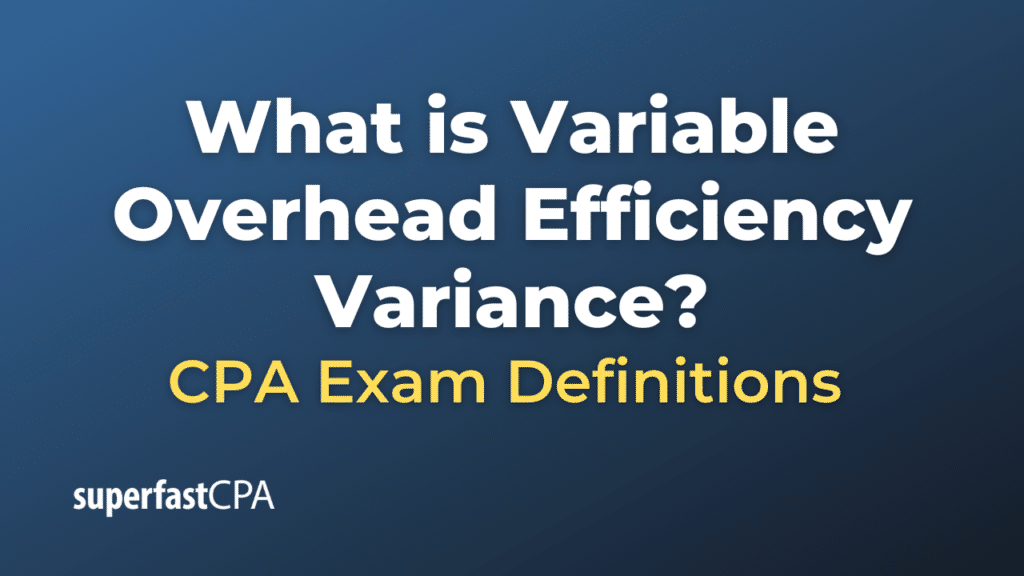Variable Overhead Efficiency Variance
Variable Overhead Efficiency Variance measures the difference between the actual hours worked and the standard hours allowed, multiplied by the variable overhead rate per hour. It is a metric used in managerial accounting to assess how efficiently a company utilizes its resources, particularly in terms of time spent on production activities. A favorable variance indicates that fewer hours were used than planned, showing efficiency, while an unfavorable variance suggests the opposite.
The formula to calculate Variable Overhead Efficiency Variance is:
Variable Overhead Efficiency Variance = (Standard Hours − Actual Hours) × Variable Overhead Rate
Example of Variable Overhead Efficiency Variance
Let’s consider a different example involving a bakery that makes artisanal bread.
Scenario:
- Variable Overhead Rate: $5 per hour
- Standard Time: It should take 1 hour to bake a loaf of bread, according to company standards.
- Actual Time: In practice, it took the bakery 1.2 hours to bake a loaf of bread last week.
- Units Produced: The bakery produced 500 loaves of bread last week.
Step 1: Calculate Standard Hours for Actual Production
The standard hours for the actual level of production would be 1 hour/loaf × 500 loaves = 500 hours.
Step 2: Calculate Actual Hours Worked
The actual hours worked would be 1.2 hours/loaf × 500 loaves = 600 hours
Step 3: Calculate Variable Overhead Efficiency Variance
Using the formula, the Variable Overhead Efficiency Variance would be:
Variable Overhead Efficiency Variance = (500 standard hours − 600 actual hours) × $5/hour
= −100 hours × $5/hour
= −$500
Summary:
In this example, the Variable Overhead Efficiency Variance is -$500, which is an unfavorable variance. This indicates that the bakery was less efficient than planned, requiring an extra 100 hours to produce the 500 loaves of bread, which led to an additional $500 in variable overhead costs for that week.
By examining this variance, the bakery can investigate why it took longer to produce the loaves and take corrective actions. Perhaps the ovens were not preheated adequately, or maybe there were delays in the mixing and shaping of the dough. The goal would be to identify inefficiencies and make improvements to bring future variable overhead costs in line with the standards.












